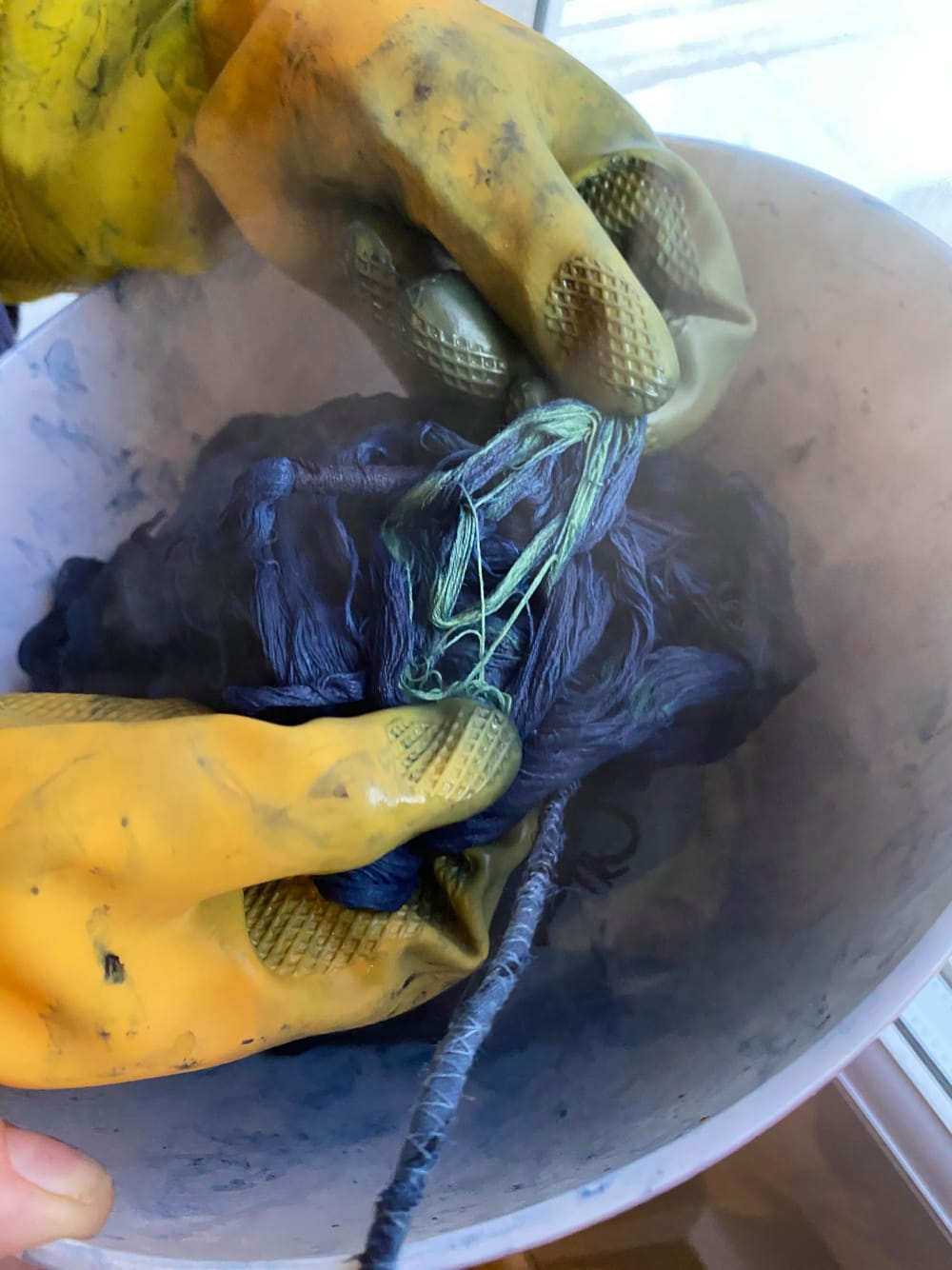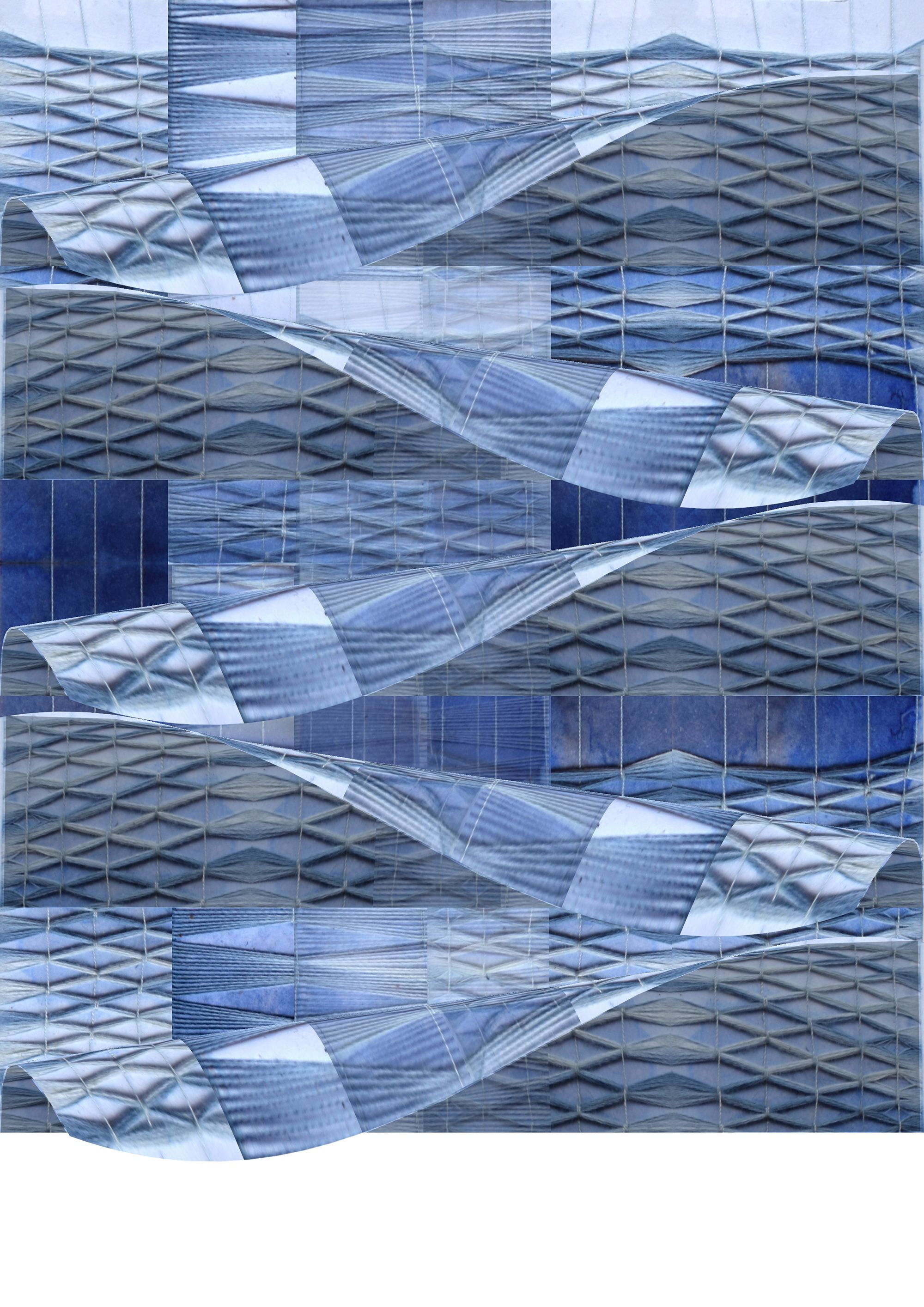
BA Textile Design students produce handcrafted textiles in honour of Mahatma Gandhi

- Written byGrizelda Kitching
- Published date 27 May 2021

Since February 2020 and throughout the pandemic, BA Textile Design students have been working with textile suppliers Khadi London in partnership with the High Commission of India on a special prize commission.
Khadi London is a supplier of natural fabrics, carefully curated and responsibly produced in India.
In India, khadi refers to handwoven and hand-spun cloth. At the beginning of the 20th Century, Mahatma Gandhi called for a boycott of foreign cloth and promoted the spinning and weaving of khadi for rural self-employment and self-reliance, rather than using cloth manufactured industrially in Britain. Khadi became an integral part of the movement that led to India’s Independence in 1947 and embodies principles of freedom and non-violent protest.
Tasked to explore new markets and products for Khadi London in celebration of the 150th anniversary of the birth of Mahatma Gandhi, 4 BA Textile Design students were then selected to bring their designs to life.

For much of the project, Covid-19-enforced lockdowns have meant that the students have had limited access to the material supplies provided by Khadi London for the project.
However, BA Textile Design students have shown resilience and imagination, often working on ideas without access to textile workshops and equipment.
The judging panel have commended the high quality of student submissions. The 4 winning students, Caitlin Hartmann, Morgan Martin, Misha Nikkhah and Sarah Tibbles, were all chosen to collaborate with partners in India on the development of their designs.

During lockdown, Caitlin Hartmann built a backstrap loom from found materials which she uses to explore supplementary warp and weft weave techniques, ikat and natural dyes.
Caitlin says:
“I interviewed weavers globally about their backstrap weaving practice and discovered a shared khadi mentality. By making connections with other craft people and engaging with the natural world, we can create sustainable craft production and build relations of respect between alternative communities.”
Caitlin is working with Khamir, a non-profit organisation, located in the desert district, Kutch, of Gujarat state in western India.

Inspired by traditional Indian imagery and storytelling, Morgan Martin explores potato and lino print and natural dyes, making paint using locally sourced natural chalk.
Morgan says:
“I was inspired by a quotation from Gandhi who said, “In a gentle way you can shake the world” I thought about my own practice and how I can promote positive attitudes. I also took part in the spinning classes with Asha Buch (charkha spinning practitioner and educator in ethical textile production) which was a joy.”
Morgan is working with Hind Natural Dyes, based in Jaipur.

Misha Nikkhah’s work investigates tapestry weaving and natural dyes. By using traditional materials such as hand-spun khadi silk yarn, she creates contemporary bespoke tapestry weaves that show appreciation for Indian hand-crafted textile traditions.
Misha says:
“By collaborating with local indigenous communities in India we can highlight the historical and ongoing significance of khadi, helping to preserve and safeguard skills and revitalise khadi.”
Misha is working with Gram Bharati Samiti, a Gandhian non-profit organisation.

Sarah Tibbles composes shibori, pleat, natural dyes, ikat and woven structure, using gradations in colour and proportion to create a contemporary aesthetic that honours traditional textile skills.
Sarah says: “I considered ethical and sustainable practices, using recycled yarns and yarns sourced in the UK, with an aim for the textiles to be hand-woven and translated using hand-spun yarns in fibres native to India. “
Sarah is working with Gramin Vikas Pratisthan, a khadi organisation in Chhattisgarh, a predominantly tribal state in central India.

We heard from Kishore Shah, co- founder and director of Khadi London about their thoughts on the impact of the project:
“This project feels like the beginning of something much bigger. It is part of a rediscovery of Indian handmade fabrics by the western world as fabrics with meaning, with texture and aesthetics as a bonus.
“Khadi, with its inherent idea of localised production where farmers, graziers and artisans collaborate and where crafts and technology work together, can provide a pathway for fashion and textiles fit for the 21st century. I wouldn’t be surprised if khadi becomes an integral part of fashion and textile syllabus in the near future.”
Lisa Bloomer, the Khadi Project Leader and Senior Lecturer on BA Textile Design at Chelsea also shared her thoughts:
“This wonderful project has gone through a number of iterations in difficult times and has been able to go ahead thanks to the energy and commitment of all involved, particularly Kishore Shah at Khadi London and partners in India.
“This a unique opportunity for our BA Textile Design students to collaborate with expert artisans and promote khadi to the wider community. Virtual meetings between students and partners in India have already begun and we are really looking forward to seeing the new designs.”
Find out more about BA Textile Design